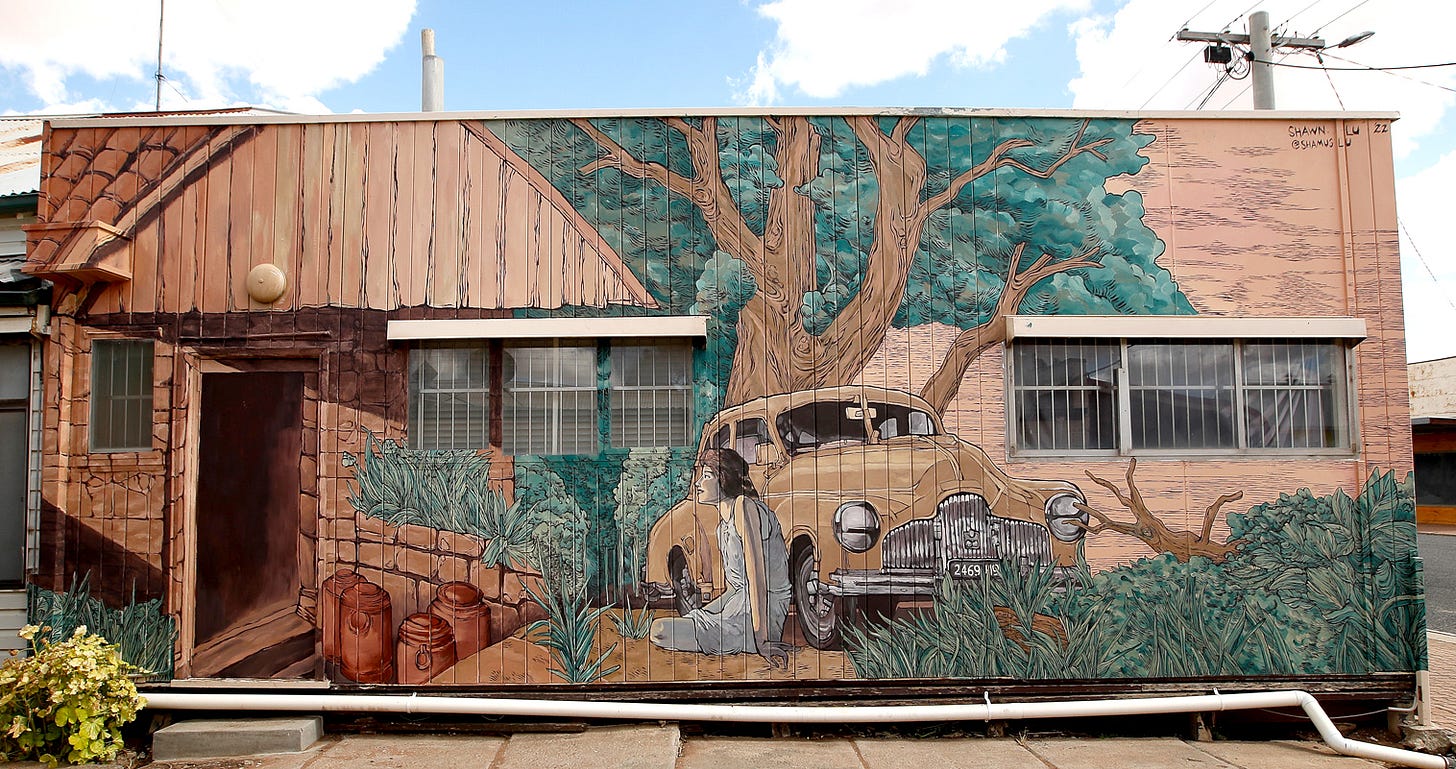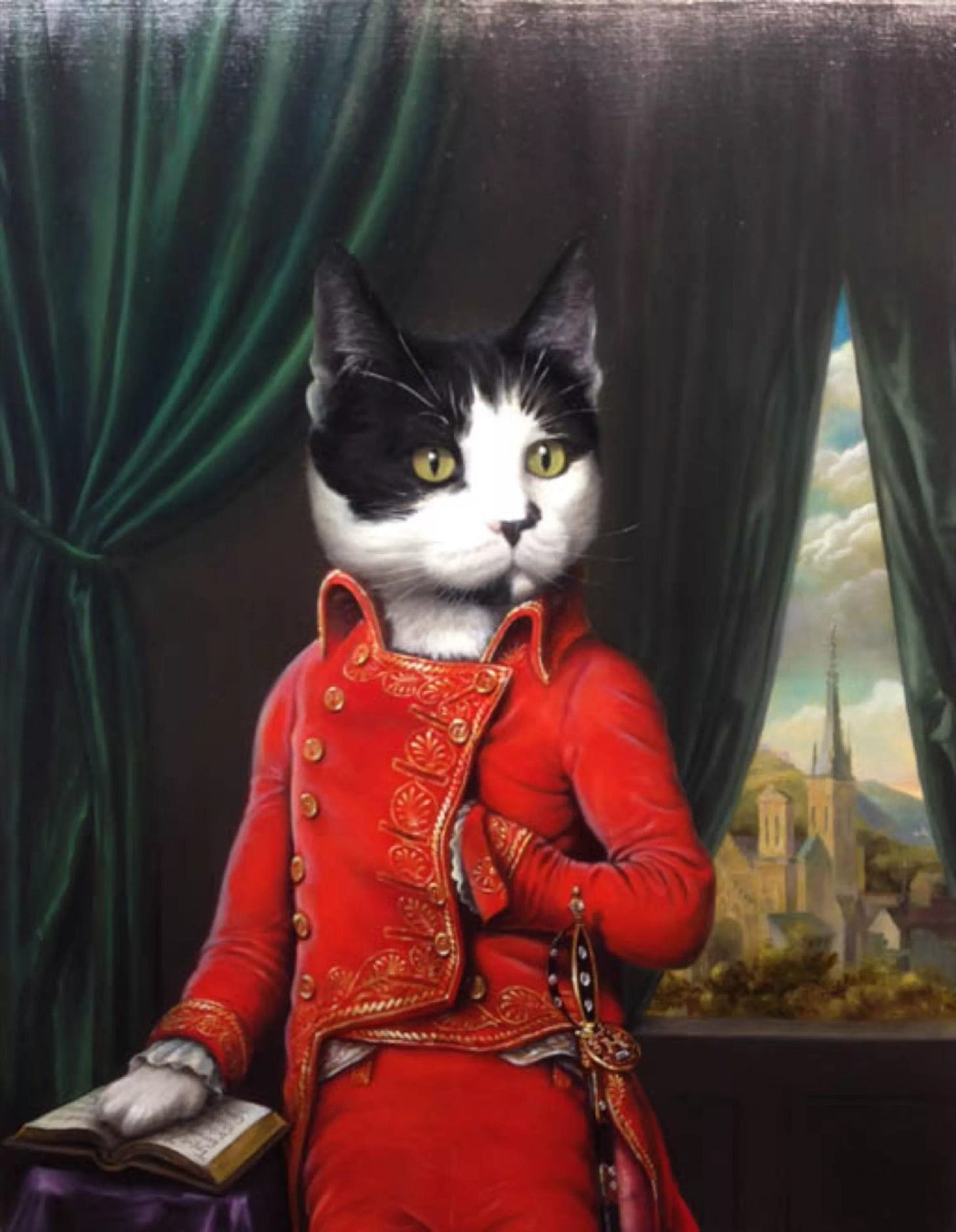A year ago, I posted the following question on Reddit:
Is your art paying your rent or mortgage? If yes, then what strategies are you using?1
The Reddit post received 113 comments and 125 upvotes, offering a wealth of insights from artists who shared their successes and challenges. These contributors may not be internationally famous or critically acclaimed, but they are thriving, earning a living through their art. This article highlights the key strategies they credit for their success.
All quotes in this article are attributed to the Reddit usernames provided by the artists in the thread. While the original post received over 100 comments, the insights shared here are based on a closer sample of 20–25 artists who detailed their strategies. You can find the full Reddit thread linked in the footnotes.
1. Getting Commercial Clients with budgets
Having commercial clients was most of the respondents' most significant avenue to a successful artistic career. Commercial clients with artistic needs have budgets to bring them to life. These ‘commercial clients’ do not mean large corporations but could be small local businesses that require artwork.
One artist’s client base is primarily comprised of local craft beer breweries. Another artist is working with a construction company who wanted murals painted after they had finished their building. My favorite is the artist who sells original work to buyers through interior designers. Another artist builds public sculptures and murals and does custom fabrication for cities and commercial clients. Most cities have budgets for public artwork, and some states require major public development projects to set aside a tiny percentage of the total cost for art and beautification.
Artists also work in art adjacent worlds and provide services such as character animation for clients, illustrations, calligraphy for wedding stationery, and graphic art for retailers to make a living.

How do you get commercial clients as an artist?
Artists with commercial and institutional clients recommend being proactive about getting work, not relying on social media, and waiting for clients to appear. (I can attest that this type of client needs the white glove treatment)
For public artists, this could mean reaching out to the local park and recreation department, primarily responsible for beautification and maintenance, which can put public artists on their radar. Another method is to apply for open calls by the city.
One effective strategy is proactively reaching out to potential clients in person, via social media, or through email. An artist who specializes in murals for craft breweries shared this approach, emphasizing the importance of having a clear and targeted pitch. For new artists, outreach should focus on inquiries and expressing interest, while seasoned artists can showcase their portfolio to build credibility.
For muralists wanting to work with businesses, such as breweries, in this case, the artist recommends checking out local brewery associations and information about any new businesses opening up and contacting them even before they have opened. This applies to any niche business associations.
Another successful muralist mentioned word of mouth as a big contributor to their growth. Two agencies working closely with other creative ad companies picked them up, skyrocketing the artist’s work. Now, they must say no to incoming businesses. While getting noticed by agencies can be challenging, strong publicity or press coverage can greatly improve your visibility and chances of being discovered.
Social media is another asset that helps create credibility but is not the only source. One artist mentioned not having a huge following but having the ‘right’ following. They have seen slow and steady growth while posting a couple of times a week.
Artists also mentioned consistency, managing deadlines effectively, and keeping existing clients happy to get newer work.
“The key to getting your name out there is consistency, managing the clients expectations and delivering the finished mural on time. Having a positive attitude is a huge plus…” - Shamuslu
2. Creating pet-related art
An unexpected winner was artists who created pet-themed art. An artist even mentioned buying an all-cash used Toyota that was fully funded by their pet imagery business. An example is an artist creating digital imagery of cute pets dressed in vintage clothing. I found it hard to understand the success of these artists until I found an article on Artsy delving more into this world.2 There is a whole pet portraiture industry out there.
How do you sell pet imagery?
These artists mentioned various strategies, such as going to dog shows, having displays in local businesses, having a social media presence, and selling prints on Etsy.
One of these artists sells at art festivals in larger cities, averages 12-15 art festivals yearly, and is moving to 20 festivals yearly. While paying for a booth at these festivals ranges from $200 to $600, they average $5000 or up per show.
Another artist mentioned raising prices slowly as their reputation grew.
“I raise my prices every year to the point I have a different client base then when I started. I took the strategy that I'd rather do fewer portraits and charge more, so I can make other money on the side when needed.” - MV_Art
3. Thinking of novel approaches to get your work out there
While social media is definitely an avenue that artists explore to get their work out there, other effective ideas involve meeting patrons face to face and interacting with them:
One artist has a studio and gallery space in a tourist spot. This artist has had this space for 15 years and works with their wife and another full-time employee. The space is located in a high-traffic area and markets itself. They no longer sell through other galleries and have stopped showing at art festivals. Here is a direct quote from the artist.

Kasun Studio is in Savannah, Georgia. The image is courtesy of the artist's website.
“My leased space fulfills most of the marketing...just being easy to find and highly visible to a wide range of people. It's almost like being at an art festival in slow motion, but I never have to load and unload a van to set up. I get repeat collectors who find me there, then buy later from my website.” - kasunart
Another strategy shared by an artist was hosting art workshops in spaces like bookstores tailored to their area of expertise—such as watercolor, woodworking, or quilting. The workshops would start with an introduction and demo, followed by a hands-on art-making experience. Attendees could then sign up for a newsletter to stay updated on future workshops or shows and be encouraged to purchase artwork supporting the business. This approach engages patrons and involves them in the creative process, strengthening their connection to the artist’s work.
Conclusion
Here are some high-level takeaways from this Reddit thread about strategies to make art pay your rent or mortgage:
Proactively Find Clients: Contact local businesses, government departments, or institutions that need art. These organizations usually have creative budgets. Apply for city open calls, introduce yourself to potential clients, and leverage word-of-mouth referrals.
Focus on Niche Markets: Explore profitable niches like pet portraits or murals.
Innovate Your Outreach: Set up visible spaces like a gallery in a tourist area or host workshops to engage directly with patrons and build lasting connections.
Be Reliable: Consistently deliver quality work, meet deadlines, and maintain positive relationships to secure repeat business and referrals.
While this article focuses on tactical strategies for earning a living through art, I want to end with a beautiful quote from one of the artists. It reminded me to be grateful for the boundless creativity within myself and others:
“If you're an artist, you're in a unique position to create your job. Go easy on yourself, allow mistakes, and learn from them. Nurture the belief that there is space in the world for your creations. Support the creation of others. Social media can never replace a personal connection, and a life in the arts runs way deeper than money.” - RFKIE
https://www.reddit.com/r/artbusiness/comments/185dgst/is_your_art_paying_your_rent_or_mortgage_if_yes/
https://www.artsy.net/article/artsy-editorial-inside-weird-wonderful-pet-portraits






I can vouch for painting people’s pets and I niched my artwork into mainly dog and cat paintings and I’ve been going for 15 years. I also sell greeting cards to trade and I can’t stress how successful this has been in bringing new clients in, cards act like a business card on steroids, the buyer picks it because they like the art and send or give it to people they think will also like the art and whilst it’s a slow game it’s a winning one, very tortoise and the hare!
Lovely analysis, thank you for sharing!!! Reddit is a gold mine when it comes to niche questions like this. I had no clue about the pet art market… not necessarily my style but it makes me wonder what other quirky niche art is profitable.